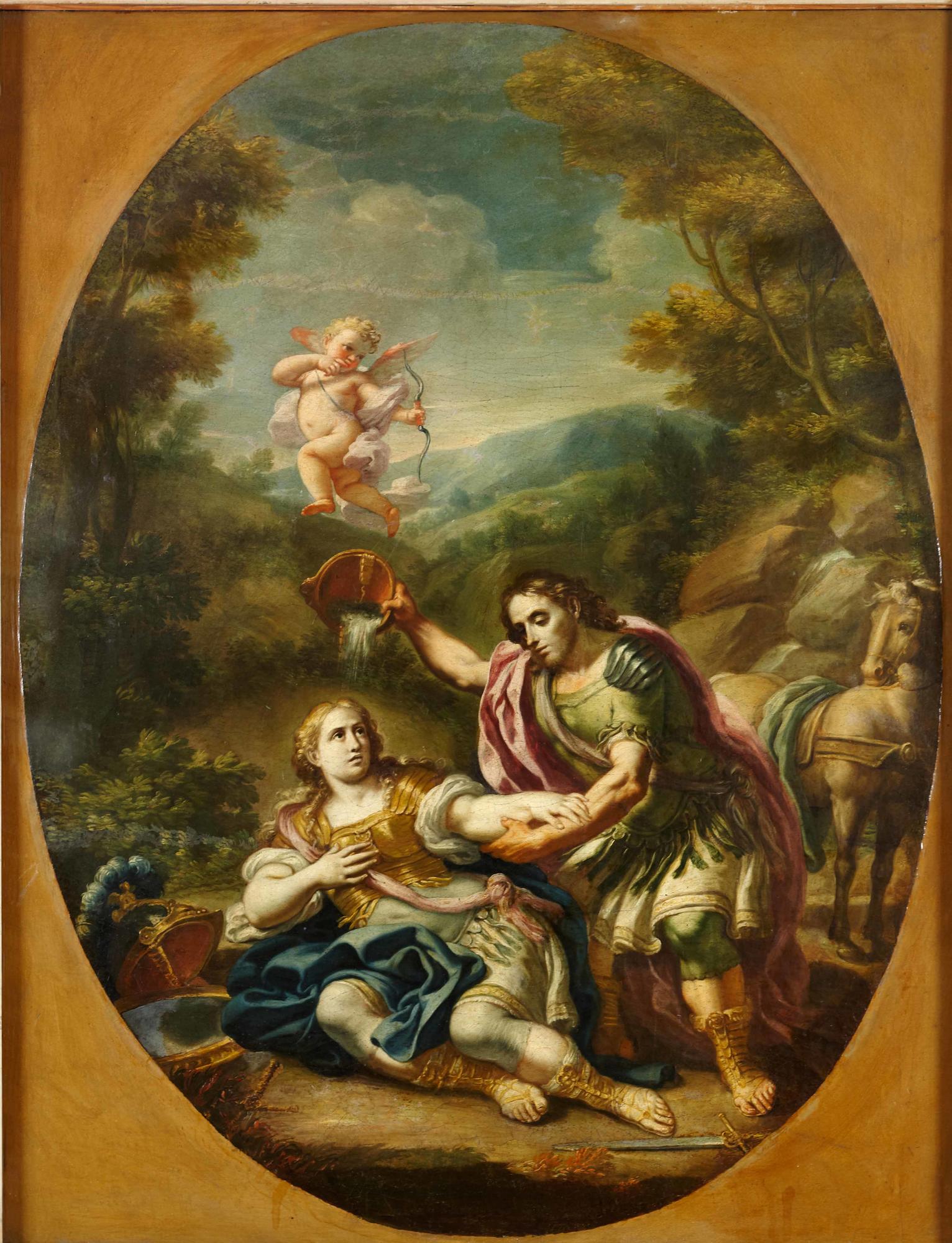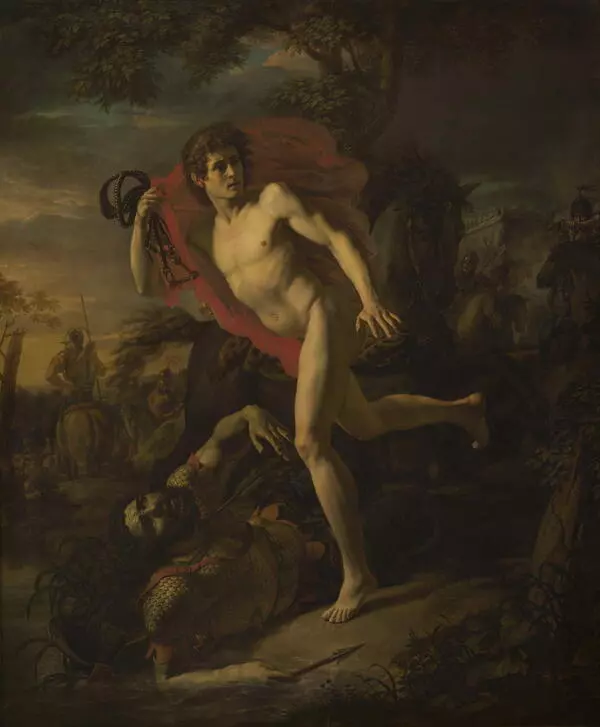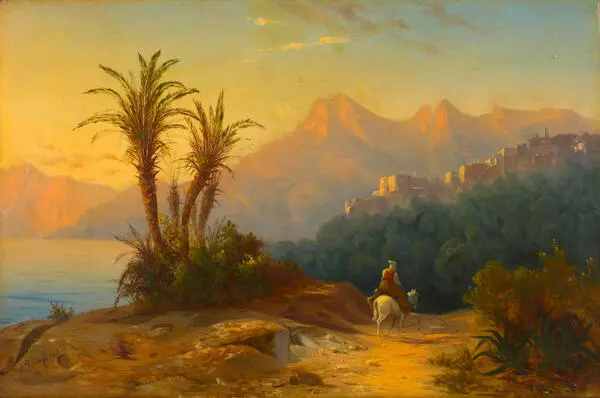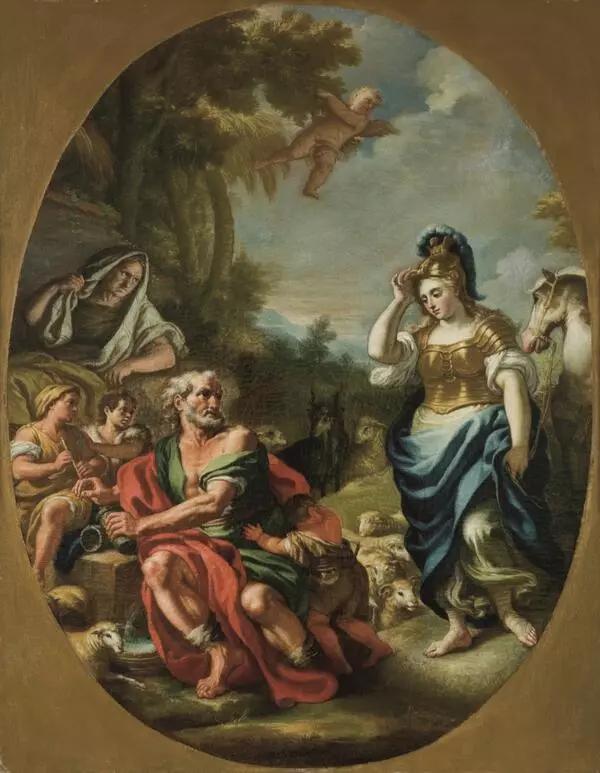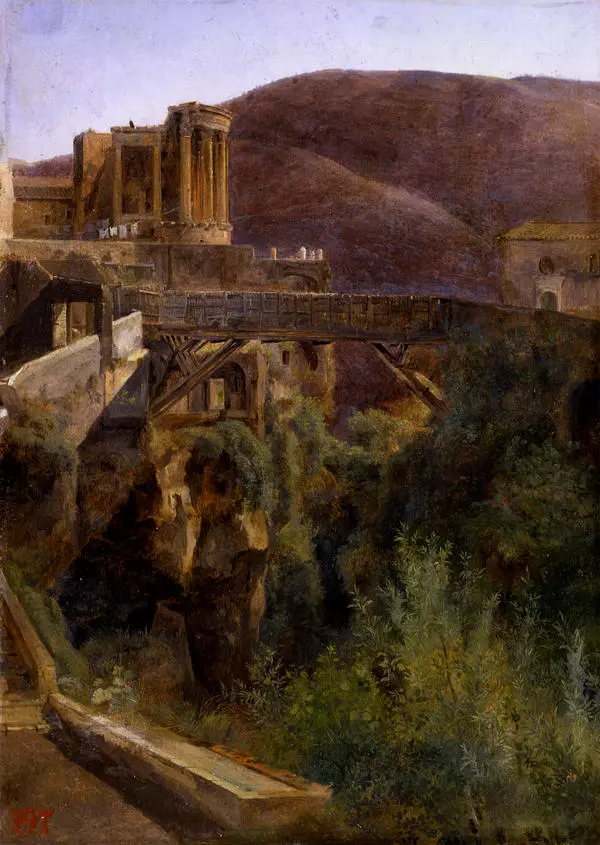Andrei Ivanovich Ivanov (1775-1848) — Russian artist, an outstanding representative of the academic school of painting. Andrei Ivanov remained in the history of Russian art, firstly, as the father and teacher of his great son — artist Alexander Ivanov, the author of the famous ‘The Appearance of Christ before the People’. The master’s own works are entirely in line with classicism. An excellent draftsman, who understands the composition perfectly, he wrote freely and at the same time achieved particular perfection in modeling the form.
The painting “Tancred and Clorinda” is built as a strictly balanced stage performance in which a dramatic theater scene is played with strong feelings and dynamic gestures. The tincture of the canvas is distinguished by the emphasized conventionality of color, and the main expressive means are the pattern and black and white modeling of the volume.
The plot of the picture was taken by Andrei Ivanov from the poem of the Italian Renaissance author Torquato Tasso’s ‘Jerusalem Delivered’ (song XII), popular at the end of the 18th century. The poem describes the events of the First Crusade, which ended with the capture of Jerusalem by the Crusader Knights.
Having fallen in love with the warlike Clorinda, who fought on the side of the Saracens (Muslims), the crusader Tancred did not recognize her in armor and mortally wounded in a duel. Before her death, Clorinda wished to adopt Christianity, and Tancred, having collected water for baptism in a helmet, recognizes his beloved. The artist depicted the moment when a heartbroken Tancred leaned over the dying Clorinda to sprinkle her with blessed water.
The artist builds this dramatic scene according to the laws of academic painting of the 18th century, combining real and mythological characters in one scene. Here are the spectacular theatrical poses of the beautiful, like the ancient gods, the main characters, and the trees with magnificent crowns against which the action is being played, and the winged Cupid hovering over a tragic couple.
The painting is probably paired with the canvas ‘Herminia at the Shepherds’, which was stored in the Novosibirsk Gallery and dated 1799. Most likely, both paintings were intended for the same interior, as evidenced not only by the choice of theme and a special plastic language, but also by the oval shape of the canvas, unusual for historical painting.
